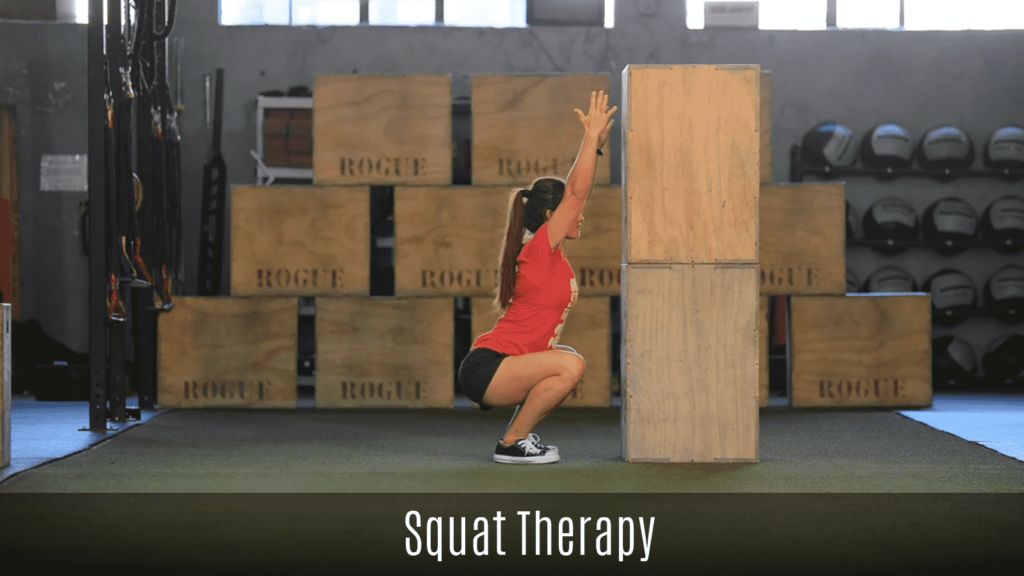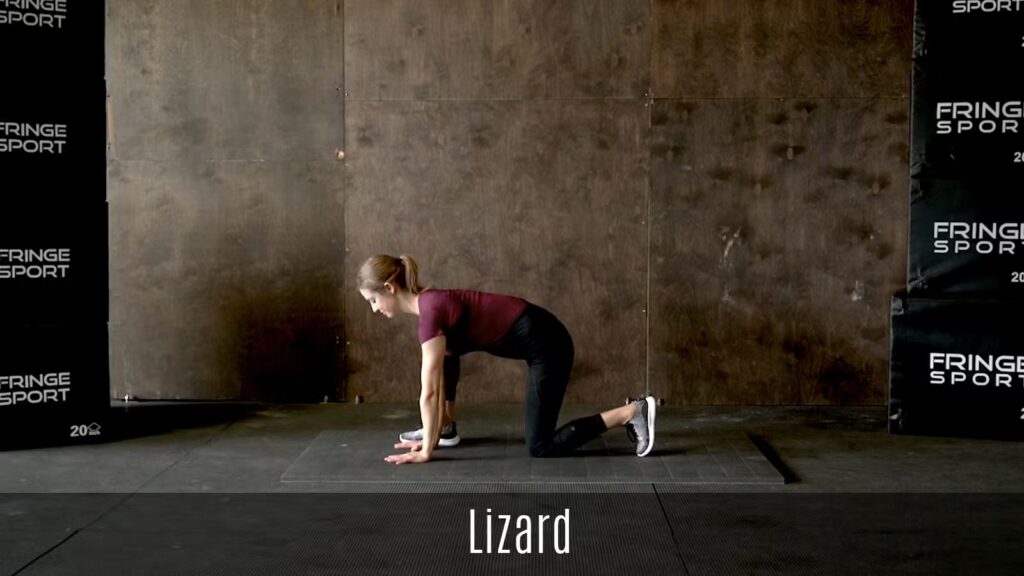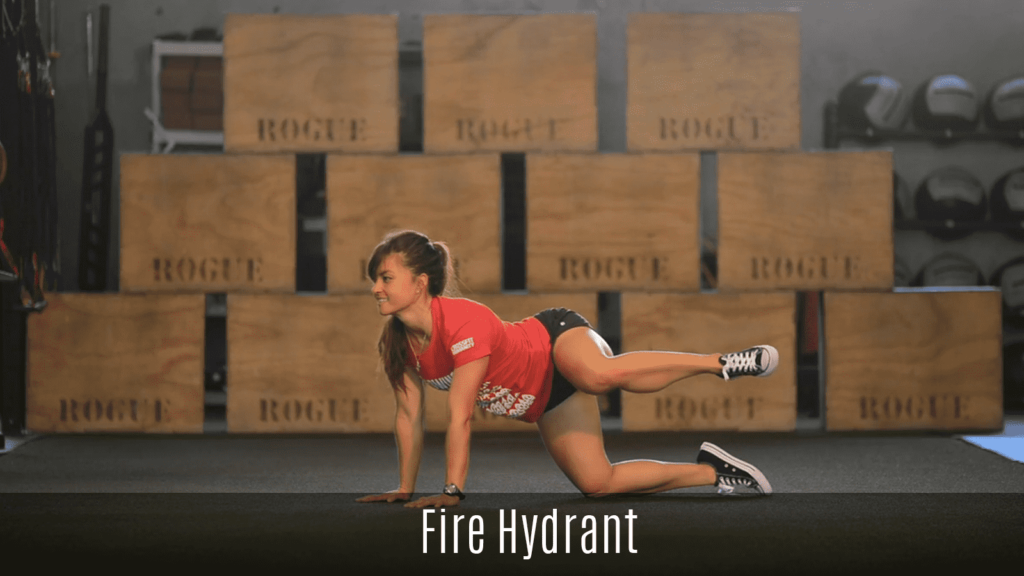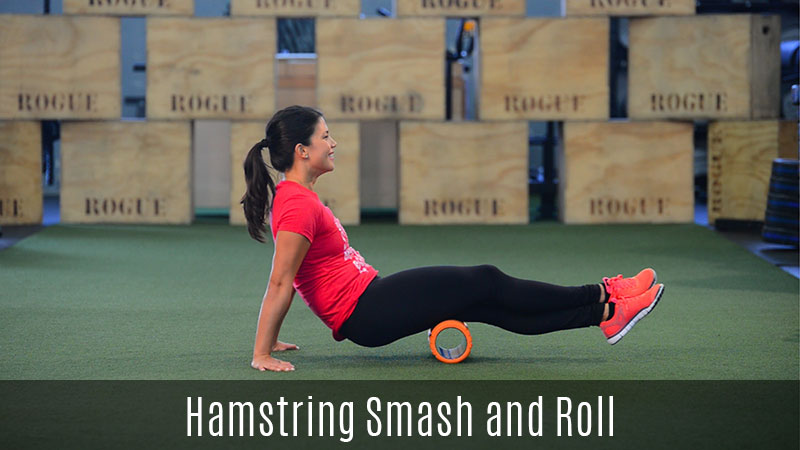Feeling down lately? Been through a bad breakup? Perhaps you’re long overdue for a good session of Squat Therapy. It is not the kind of therapy that will solve the problems of your life, but it will improve your squat. Better squat form and conditioning will lead to stronger workouts, less chance of injury, and overall improved quality of life and mental well-being. So what better place to start, right?
All humor set aside, Squat Therapy is a mobility drill and an excellent way to condition your glutes, core, quads, hamstrings, and balance. By performing a basic air squat and holding the pose for an extended period, you will test the endurance limits of these critical muscles. Ultimately, this movement will help perfect your squat, a foundational movement necessary to master before graduating on to more challenging exercises such as the barbell back squat, barbell front squat, and the overhead squat.
When our squat form is 100%, we can then start adding heavier loads greater than just our bodyweight. Even if you are already an experienced weightlifter, you will find performing this movement can help pinpoint weaknesses in your form, leading to improved gains in your next workouts.
Without further ado, let’s dive into it. We will cover how to do the squat therapy movement, the benefits of incorporating this move into your warm up routine, and ways to modify it if needed.

What is Squat Therapy?
No matter if you are an advanced squatter or perhaps just starting to learn how to squat, squat therapy can be beneficial for you. To perform this movement, all you need is yourself and a wall (or mirror or tall stack of wooden boxes or some other tall, sturdy surface.)
When you’ve found the space in which you can work, start by facing the wall. Bring your feet a little wider than shoulder-width apart. In this position, your toes can be slightly turned outwards. Start by standing one to two feet away from the wall.
Extend your arms up overhead with your palms facing it towards each other. Pull your belly button in towards your spine and imagine that you are pulling your rib cage down. This will help engage your core and keep your spine in alignment.
Once your feet, arms, and core is set into place, slowly start to sink your hips back and down into a squat. This should be done with control following the mechanics of an air squat. Come into the bottom of the squat. At this point, your hip crease should be below the top of your knee. This is called “breaking parallel” and it is the depth we look for anytime we squat.
Once you have reached the bottom of your squat, hold the position for ten seconds. Fight hard to keep proper position. Your knees should be pushing outwards and your chest should be proud and upright. Hold your arms at full extension and keep your eyes focused forward.
After ten seconds have elapsed, drive through your feet to stand to full extension. Do your best to not touch the wall at any point during this time. This is one repetition.
Depending on your personal anatomy, mobility, and flexibility, there might be some opportunity to play with your positioning. Find a foot position that feels best for you. Some people prefer to squat with a more narrow stance while others may have to go wider. You can also move in closer to the wall to make this move more challenging.
The Benefits of Squat Therapy
Squat therapy is a way to really drill in the proper mechanics of squatting. When we know how to squat with good form, it really will help to prevent any injuries from occurring. This is also a great movement to do if your workout of the day is squat-focused. Do 5-10 reps of squat therapy before loading up a barbell to ensure your muscles are primed and ready to move heavy weight.
Besides the obvious squat benefits that this movement offers, it is also a great way to activate the core, shoulders, and arms. It takes quite a bit of focus and strength to keep the core upright and the arms fully extended as you move through this exercise. If you have limited shoulder mobility, you might also find this challenging. It is important to work through the range of motion you possess and try to improve upon it each time. All in all, squat therapy is a classic warm up movement that should be utilized by new gym-goers and veterans alike.
Squat Therapy Modifications
If you need to make this movement a little bit easier, there are a couple of ways to do it. The first would be to complete the movement, but instead of bringing your arms overhead, keep them crossed at your chest. You can also keep the arms long in front of your body as a modification too. When you squat down, your arms will be dangling between your legs.
As we mentioned before, you can modulate the difficulty of this movement by playing with the distance you stand away from the wall. The close you are to the wall the more difficult or challenging the movement will be.
How to perform Squat Therapy
Position yourself in front of a wall, mirror, or a stack of boxes.
Place your feet outside the width of your shoulders and pointed slightly outwards. They should be one to two feet lengths back from the wall.
Raise both your hands straight up above your head, palms facing towards each other.
Keeping your core tight and your chest upright, slowly lower your hips down into a squat position. This should be a slow, controlled movement.
Stop at the bottom when your thighs are lower than your knees. Do not let your knees move forward past your toes.
Rest for 10 seconds at the bottom of the squat, and then slowly return to the standing position. At no time during your movement should your hands or body touch the wall.



